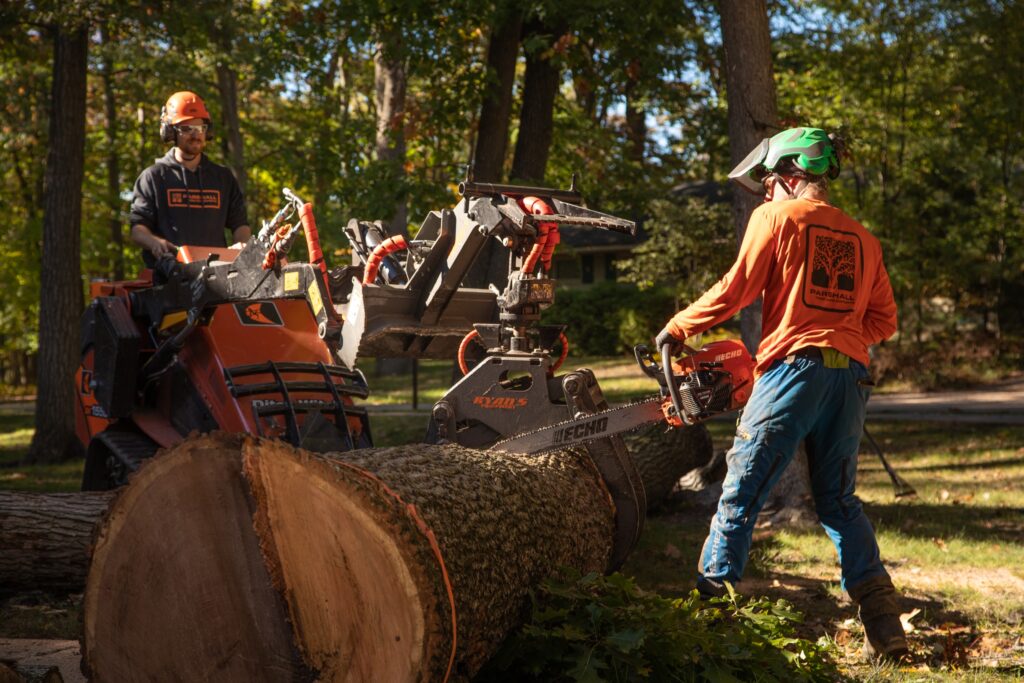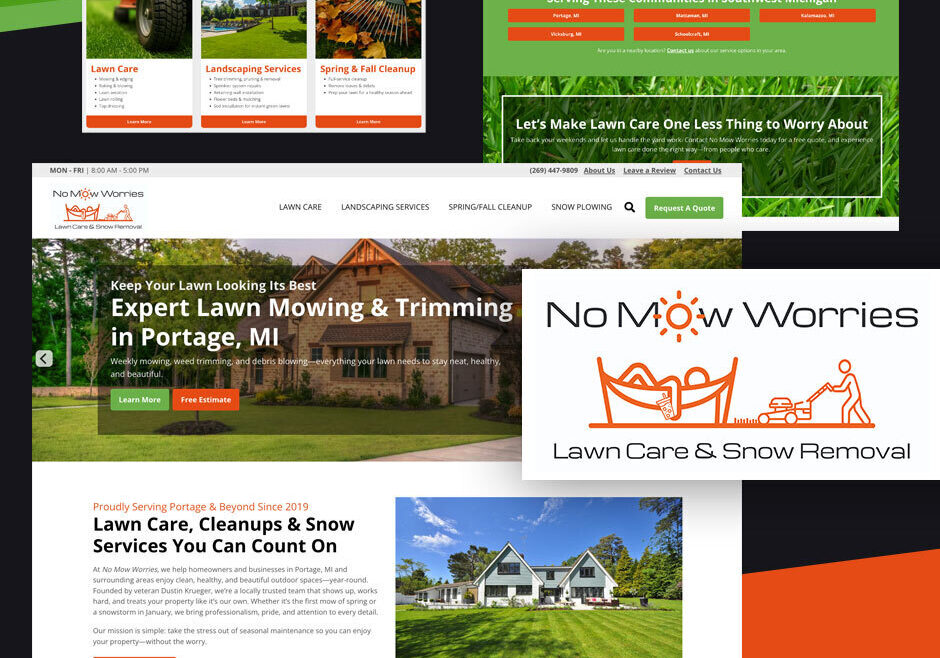The Cost of Doing Business When it Comes to Scheduling and Routing Tree Care

You’ve just wrapped up a significant tree removal or pruning job. The crew worked hard, the client seems happy with the result, and the invoice reflects the agreed-upon price. Yet, when you review your numbers at month’s end, your profit margin often looks thinner than expected. Where is the money leaking?
For many successful tree service business owners and managers, the answer isn’t always obvious. While expertise in arboriculture is essential for tree care professionals , understanding the cost of doing business in your tree or landscaping business is equally critical for long-term profitability and sustainable growth.
Many businesses excel at the hands-on work – the felling, the climbing, the planting – but grapple with the complex web of operational costs hidden within the daily logistics of getting crews and equipment where they need to be, when they need to be there. Effective scheduling and efficient route planning are more than just administrative chores – they are fundamental drivers of operational efficiency and financial health.
Overlooking the true costs associated with these logistical functions, especially the less obvious ones, can silently erode your profits. The good news? Optimizing these processes, often leveraging a powerful routing software solution, isn’t just possible – it’s a key strategy to boost your bottom line and improve customer service.
Beyond the Quote: Hidden Costs of Tree Care Logistics
Your proposal typically covers the direct costs: on-site labor, materials like fertilizer or replacement plantings, and perhaps specific equipment rental. But running a successful service business, whether it’s tree care, lawn care, or landscaping, involves many expenses that accrue before the crew even starts the engine at the job site, between appointments, and after the work is technically done. These hidden costs are deceptive because they often aren’t tracked directly against a specific job’s profitability in manual systems, particularly when customer information is not centralized. Let’s shed light on some major culprits:
- Travel Time: This is perhaps the most significant hidden cost. Every minute your crew spends driving between jobs, heading back to the shop for forgotten tools, navigating inefficient service routes, or traveling to disposal sites is non-billable time. You’re paying wages, consuming fuel, and putting wear on vehicles – all without generating direct revenue. A small business can see hours of productive time vanish each week simply due to poor route optimization.
- Example: Imagine a crew spending an extra 60 minutes per day in transit due to backtracking or illogical sequencing. For a three-person crew paid $25/hour each, that’s $75/day, or nearly $19,000 annually, lost solely to inefficient travel.
- Fuel Costs & Surcharging: Fuel costs are volatile and represent a substantial operational expense. Suboptimal routes mean more miles driven, directly increasing fuel consumption. A small lawn care business operation can spend around $5,000 per year on fuel costs, depending on gas prices. While some businesses implement fuel surcharges, accurately calculating and justifying them to clients without precise mileage tracking tied to optimized routes can be challenging and impact customer satisfaction. Poor planning directly inflates this unavoidable cost.
- Shop Time: The clock starts ticking for your crew long before they reach the first client. Morning routines involving vehicle checks, loading equipment and materials, reviewing job details, and evening tasks like unloading, cleaning, and tool maintenance constitute necessary but often untracked “shop time.” While essential for smooth daily operations, this time should be factored into your overall cost of doing business.
- Material Delivery & Pickup: Does a job require specific mulch, soil amendments, or a rented stump grinder? The time and vehicle expenses associated with picking up these materials or dropping off logs and debris at a specific facility add up. If not planned efficiently, these errands can disrupt schedules and distract crew members from revenue-generating site visits.
- Overtime: Consistently running behind schedule often leads to overtime pay, significantly increasing labor costs. This isn’t always due to underestimating job duration. Frequently, it’s a direct consequence of inefficient scheduling – packing the day too tightly without accounting for realistic travel or delays caused by poor route planning earlier in the day.
- Wear and Tear: More miles driven on inefficient routes means faster depreciation of your vehicles and increased frequency of maintenance for trucks, chippers, and other essential equipment. These costs, while perhaps budgeted annually, are directly exacerbated by poor logistical planning.
- Administrative Overhead: Consider the hours your office staff or you, the owner, spend manually mapping routes, juggling schedules, making confirmation calls, handling cancellations and rescheduling, relaying job details to crews, and troubleshooting logistical fires. This administrative burden is a real cost, stealing time that could be spent on sales, customer management, or strategic planning.
The Critical Link: Job Costing AND Scheduling/Routing Efficiency
Accurate job costing is undeniably crucial. Knowing precisely how much labor, materials, and equipment time went into a specific job allows for intelligent pricing and profitability analysis. However, job costing in a vacuum is incomplete. Its accuracy is fundamentally dependent on the efficiency of your scheduling and routing. They are two sides of the same profitability coin.
Think about it:
- Inefficient route planning directly inflates the actual labor and fuel costs associated with a job, even if the on-site work estimate is perfect. Your job costing data might show 3 hours of on-site labor, but if an additional 1.5 hours were spent on avoidable travel due to poor routing involving multiple drivers or illogical sequencing, the job’s true cost is much higher.
- Poor scheduling – like sending a crew to a site before necessary materials arrive, double-booking a critical piece of equipment, or not allocating enough time between jobs – leads to costly downtime or forces overtime. This directly impacts labor costs and throws off your resource allocation, again making the initial job cost estimate less reflective of reality.
- On the other hand, excellent route optimization, leading to the most efficient routes, and smart scheduling minimizes non-billable time, reduces fuel consumption, and allows crews to potentially complete more jobs in a day, improving overall operational efficiency and the accuracy of your job cost analysis.
Real Example: Let’s revisit our $1500 pruning job scenario. Job A is part of a tightly clustered schedule created using route planning software, requiring only 30 minutes of travel. Job B, scheduled manually on the fly, requires a cross-town trip taking 2 hours. The on-site work and materials cost are identical. However, the tree service performing Job B incurred an extra 1.5 hours of labor cost, plus additional fuel and vehicle wear. Without accounting for this routing inefficiency, the reported profit margin for Job B would be misleadingly high. True job costing must incorporate the actual time and resources consumed, heavily influenced by scheduling and routing effectiveness.
How Technology Transforms Tree Care Operations
Manually managing the complex interplay of crew availability, equipment needs, customer locations, traffic patterns, and changing schedules is a daunting task. Spreadsheets, whiteboards, and paper maps are prone to errors, inefficiencies, and communication breakdowns. This is where modern technology, specifically designed for field service business operations, becomes indispensable.
How can tree care businesses and similar lawn care companies effectively gain control over these variables?
Enter Arborgold. Arborgold’s comprehensive scheduling and routing software transforms how landscape, tree care, and lawn care businesses manage their operations. It provides an intuitive, user-friendly platform that centralizes all appointment management, crew assignments, and route planning in one powerful hub. This isn’t just another tool – it’s a strategic asset designed to tackle the very challenges we’ve discussed.
Key Features
Here’s how a robust software solution like Arborgold addresses the hidden costs and inefficiencies:
- Optimized Routes, Reduced Costs: Arborgold’s route optimization capabilities automatically generate the most efficient routes for your crews based on job locations, crew assignments, traffic data (in some integrations), and appointment windows. This directly minimizes travel time, slashes fuel costs, reduces vehicle wear, and maximizes the billable hours in a day. No more manual mapping or guesswork for multiple drivers or crews. Features like GPS tracking can offer further valuable insights into actual time spent traveling versus on-site.
- Intelligent Scheduling & Resource Allocation: The scheduling software component allows you to visualize crew availability, equipment assignments, and job requirements all in one place. You can easily schedule jobs, assign jobs to the right crews with the right skills and equipment, prevent double bookings, and build schedules that account for realistic travel times derived from the optimized routing. This improves resource allocation and drastically reduces downtime and unnecessary overtime.
- Streamlined Job Management & Communication: Centralize all customer information, job details, service history, and notes within the platform. Crews access their schedules and job information via a mobile app (available on Android devices and iOS), ensuring they have everything they need on-site. Updates and changes are communicated efficiently, reducing errors and frantic phone calls. This enhances job management from start to finish.
- Enhanced Customer Satisfaction: Efficient scheduling means reliable arrival times. Automated customer notifications can keep clients informed about appointment reminders or potential delays, significantly improving the customer experience and fostering trust. Providing personalized service becomes easier when customer details and history are readily accessible. Effective customer communication is key to improve customer satisfaction.
- Accurate Data for Better Decisions: By tracking actual time spent on jobs (including travel time informed by real-time tracking or optimized routes), Arborgold provides much more accurate data for job costing and profitability analysis. This allows you to refine pricing, understand which services are most profitable, and make informed business decisions. The sales team can leverage service history for targeted follow-ups.
- Improved Operational Efficiency: From automating route creation to streamlining communication and providing mobile accessibility, the entire workflow becomes smoother. This frees up administrative time, reduces errors, and allows your team – both in the office and the field – to focus on delivering top-notch service and completing more jobs. It helps you manage daily operations effectively.
While other tools exist, and some businesses might piece together various apps, an integrated tree management software or comprehensive lawn care software like Arborgold provides a cohesive, user-friendly experience tailored to the specific needs of tree and lawn care professionals. Its key features are designed to directly save time and boost efficiency.
Transforming Your Tree Care Business & Driving 70% Growth with Arborgold
The impact of switching to a comprehensive system like Arborgold isn’t just incremental – it can be transformative. Look at the experience of Parshall Tree Care Experts, a rapidly growing tree care business that faced the common challenges of managing exponential growth using traditional paper-based methods.
Parshall Tree found Arborgold’s scheduling software capabilities, particularly the ‘districts’ feature, incredibly valuable. This allowed them to create ‘micro-districts,’ enabling crews who finished a job early to easily find and tackle another nearby job using the mobile crew app – significantly increasing the number of jobs completed daily and boosting operational efficiency. They noted that achieving such efficient service routes, which consider location, service type, and even assigned inventory, “would have been a pain without Arborgold.”
The outcome? Corey Parshall calls Arborgold a “GAME CHANGER.” They reported a remarkable 50-70% increase in overall revenue for two consecutive years, stating this growth was a “direct correlation and link” to their investment in using the software.
Ready to see if Arborgold is the right fit to optimize your operations and potentially achieve similar success? Take the next step and view the detailed online product tour!
Taking Control of Your Costs and Your Calendar
The cost of doing business when it comes to scheduling and routing tree care is far greater than just the price of fuel or a salary line item. It encompasses lost productivity, inflated operational expenses, administrative burdens, and potentially impacted customer satisfaction. Ignoring these factors means leaving money on the table and limiting your business’s potential.
By embracing efficient practices and leveraging powerful essential tools like Arborgold, you can transform your daily operations. You gain control over hidden costs, optimize your service routes, and improve efficiency across the board. The result isn’t just cost savings; it’s smoother service delivery, happier crews, the ability to schedule jobs more effectively, and ultimately, enhanced customer satisfaction because you keep customers informed and meet commitments reliably.
Don’t let inefficient logistics drain your profitability or slow your growth. Analyze your current processes, identify where time and money are leaking, and explore how a dedicated software solution can help you save time, build optimized routes, streamline scheduling, and drive your tree service or lawn care business towards greater success. Taking control of your schedule and routes is taking control of your bottom line.
Frequently Asked Questions
How much does routing and scheduling software cost for tree care businesses?
Costs vary depending on the provider, features, and size of your business. Software like Arborgold typically offers tiered pricing based on the number of users, modules, and service types, making it scalable for both small and large teams. It’s best to request a demo or quote to understand exact pricing for your needs.
Can small tree or lawn care businesses benefit from scheduling software?
Yes. Even small businesses can benefit from route optimization, scheduling tools, and centralized job management. Software solutions help eliminate wasted time, reduce manual admin work, and improve customer communication — all of which can increase profitability, no matter the company size.
How long does it take to implement Arborgold?
Implementation timelines depend on your current systems and data. With dedicated onboarding support, most businesses can get up and running in a few weeks, including setup, data migration, and team training.
What are signs my business needs route optimization software?
Common signs include frequent overtime costs, inconsistent arrival times, excessive fuel expenses, administrative overload from manual scheduling, and difficulty scaling operations. If you’re experiencing any of these, software like Arborgold can help improve efficiency.
Share this resource








